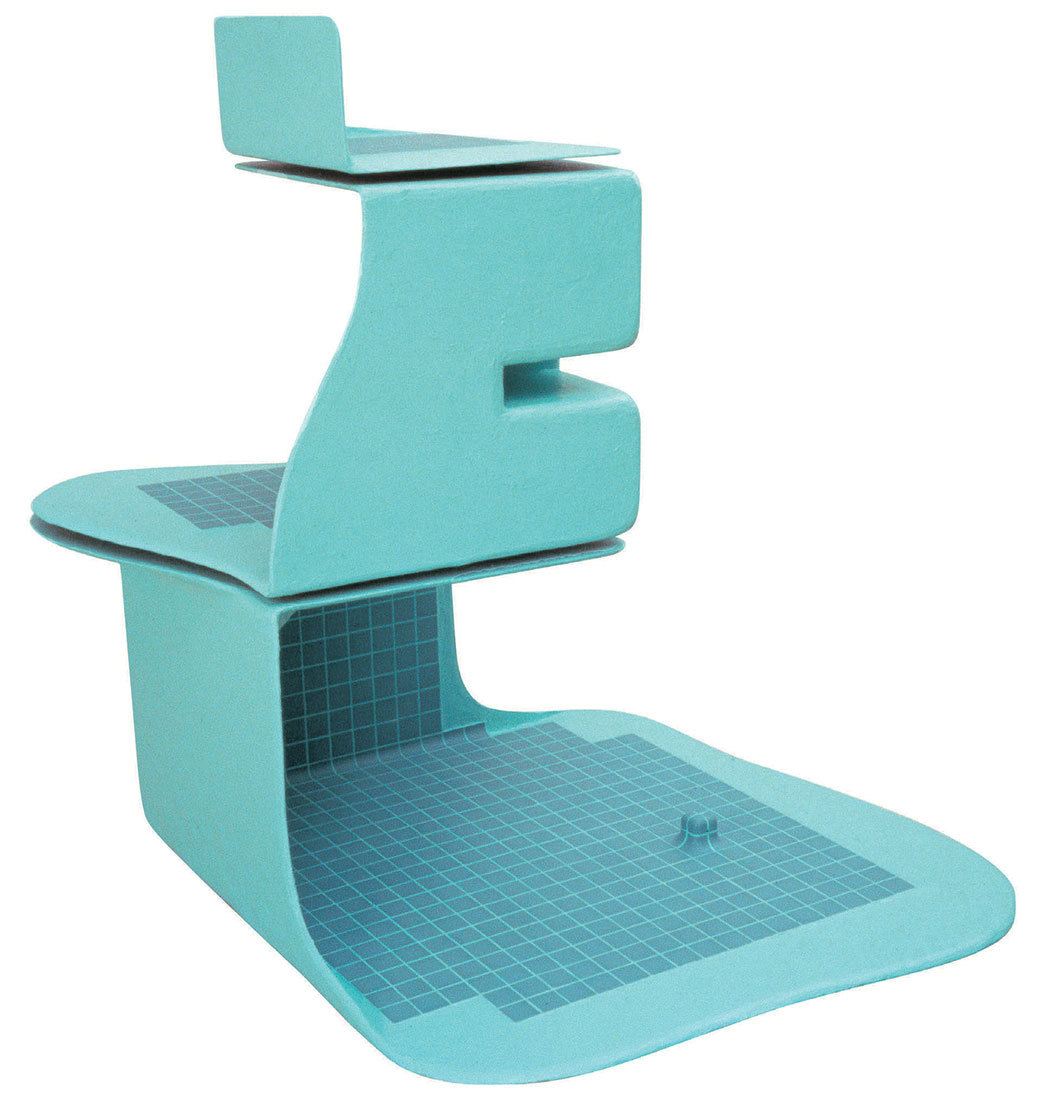Casey Kaplan


BODY HORROR
MATTHEW RONAY AND LANE RELYEA ON THE ART OF TISHAN HSU
Tishan Hsu’s paintings and sculptures evoke nightmarish visions of the body’s forced integration with its technological surrounds. After a spate of exhibitions in the 1980s at venues including Pat Hearn Gallery and Leo Castelli, the artist’s work largely disappeared from public view. Now, New York’s SculptureCenter has organized the survey “Tishan Hsu: Liquid Circuit.” The show debuted at the Hammer Museum, Los Angeles, this past winter and was slated to open at SculptureCenter in May before being postponed in the wake of Covid-19. To mark this occasion, Artforum invited artist Matthew Ronay and art historian Lane Relyea to reflect on Hsu’s dark, prescient, and singularly weird oeuvre.
MATTHEW RONAY
I NEVER KNEW THAT I LOVED DRAINS. An algorithm on YouTube revealed this predilection to me. As a connoisseur of portals, orifices, and pores, I should have known that drains and the waste they imply, hidden beneath their sterile exteriors, would be in my pleasure zone. I look at most art in the same way I look at drains on YouTube: in reproduction, removed from reality. I came across Tishan Hsu at a similar remove, through books and the internet. The vents, screens, intakes, fantasy architectures, and fleshy degradations that pervade his work “clogged” me from my first impression.
Some of Hsu’s pristine Euclidean models, such as “Ooze,” 1987, resembling a barren sauna basin waiting to be filled with myriad fluids, arouse in me a love for the rational illusion that architecture brings to sculpture. Offsetting this order are feelings of confinement, abandonment, and disease. Are the works’ patterns, punctured with holes, just some piebald markings, or are they lesions, viral cells, torture wounds? The world created by Hsu’s reliefs feels stagnant, swampy; at the same time, it suggests the paradoxical experience of cosmic velocity, when things seen through a spaceship window appear still even though they’re careening through the universe. The ship’s claustrophobic interiors will also appear in sharp contrast to the sublime infinity of outer space. Similarly, the louvers in Hsu’s paintings like “Closed Circuit II,” 1986, which resemble dashboards or readouts—or interfaces for an AI assistant like the medicine cabinet in George Lucas’s “THX 1138″ (1971)—are hauntingly still, almost refrigerated, yet imply activity. The oscillators in the painting show nothing, or perhaps their sine waves are so long we cannot see them. “Has humanity flatlined?” the artist seems to ask. “Has technology paused evolution?”
Undulating, sagging flesh is abundant in Hsu’s work. Who among us hasn’t noticed their own flabby bits or felt a shock run through them when confronted with the failing body of a loved one in a hospital? On one of the transparent vellum pages of a book filled with quotes and diagrams from eclectic sources Hsu made for a 1986 show at New York’s Pat Hearn Gallery, I came across a citation of Elaine Scarry—who? Research. I was researching Tishan Hsu; now I’m reading Elaine Scarry’s 1985 book, “The Body in Pain.” “Human beings project their bodily powers and frailties into external objects such as telephones, chairs, gods, poems, medicine, institutions, and political forms, and then those objects in turn become the object of perceptions that are taken back into the interior of human consciousness where they now reside as part of the mind or soul.” It’s all starting to flow. It doesn’t make sense yet, thank goodness, but I’m beginning to grok. Scarry has much to say about the body and the room. How the body is like a room and vice versa. She also writes about how we don’t have nuanced language to communicate pain and how we don’t believe each other’s pain. And now I’m thinking about the kind of pain that a body remembers. Looking at Hsu’s work makes me feel like I am renting pain in the process.
Even his more rigid tile pieces—such as “Vertical Ooze,” 1987, and “Holey Cow,” 1986—sag or bulge, as if he had merged neural networks with isometric drawings, skin tags, and booths for intergalactic spa treatments. Are they models of nature? How is it that this work feels simultaneously organic and technological? Why can’t I stop thinking about drains and what kinds of liquids ran through them even though there are none here? I also see bunkers, sites of decontamination or compartmentalization. When I look at pool pieces like “Heading Through,” 1984, I wonder if I’m in the shower scene from the 1983 nuclear drama “Silkwood.” Or perhaps a germ-free future? The tile works are idealized, fantasy architectures, very useful if your goal in creating shelter is to express yourself. The eighteenth-century Neoclassical architect Claude-Nicolas Ledoux realized all manner of civic solutions for essentials such as pumping stations without jettisoning his sense of humor or heightened aesthetics, and I wonder what necessity these snippets of space Hsu has created embody. Hsu’s are sites of self-care—future hammams where liniments are applied and dermabrasion happens and dead cells disappear down holes into pipes. Sometimes I imagine his cropped rooms are bodies: In “Vertical Ooze,” they sure look pressed against each other polyamorously. They’re often tumescent—from pleasure? Or pain? Neither, since the whole world Hsu has created is a simulation. Or is it?
From the May/June issue of Artforum
Read the full article on Artforum.com